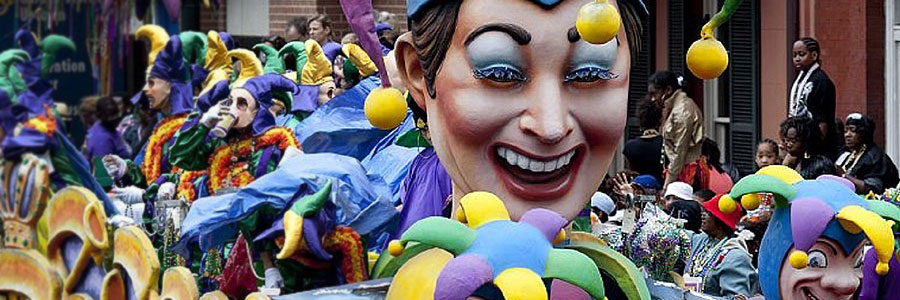
History of Mardi Gras
- ArticlesandContent.com (CIRCA 2005)
- /
- Oct 8, 2021 (written 2005)
Like much of the culture of Louisiana, the modern celebration of Mardi Gras and its manifestation in parties and parades around the United States, particularly in New Orleans, are a direct result of French influence.
However, the origins of Mardi Gras go back much further than the French celebration of the beginning of the Lenten Season. The origins of the holiday and many of its customs and traditions can be traced directly back to the Ancient Romans.
European countries and countries primarily inhabited by ethnic Europeans have many holidays that are celebrated and rooted in the festivals and traditions of the Ancient Romans and the ancient pagans of Europe. Over the years, Christians imbued these holidays with religious significance. The ancient celebration of the pagan fertility goddess Eostre became Easter. The Roman festival Saturnalia is now celebrated as Christmas. Another Roman festival, the celebration of Lupercalia reaches us today through two celebrations, St. Valentine’s Day and Mardi Gras.

Lupercalia was celebrated by Romans on February 15. The festival was officially dedicated to the god Faunus, better known to modern audiences by his Greek name Pan. He was the god that ruled fertility among livestock and in the fields. The festival was also a time to celebrate Juno, wife of Zeus, queen of the gods, and the goddess that ruled fertility, motherhood and marriage. During this festival, the Luperci, who were priests devoted to Faunus, would sacrifice two goats and a dog. After the feast, the priests would run around Palatine Hill, one of the seven hills of Rome as a pair and hit any woman who came close to them with a piece of bloody skin cut from the sacrificed animals. To our modern ears, this sounds like a disgusting practice, but Roman women saw it as a blessing. Being struck with the skin of the sacrificed animal was supposed to insure fertility and safe child-delivery through the next year.
Many Roman parties and festivals were lively. It is very easy to imagine Roman women flashing their breasts, symbols of fertility, and the priests to get their attention so they could be struck by the bloody skin. Most cultural historians would agree that the modern practice of throwing beads, especially to women who flash their breasts, is a less bloody and cruel version of being hit by the priest with the bloody skin. The custom of wearing masks came much later, once the holiday had been Christianized and people ideas of morality became more conservative. The party remained as rough and wild as it ever was, but people took to wearing masks because they felt freer to take part in the crazy festivities if their identities were at least somewhat concealed. The Mardi Gras mask doesn’t really conceal identity very well, but it is more psychological in that it allows people to be someone else for the evening.
Over the years, as Christianity took over Europe, people still celebrated this festival, only it became the beginning of the Lenten Season. People of every religious extraction can celebrate Mardi Gras, but for modern Catholics, it is a last chance to get crazy before lent, the time leading up to Easter, a time when they are supposed to give up some of their worldly comforts and be repentant. Indeed, the last day of the Mardi Gras celebration is Fat Tuesday. On this day people traditionally engorge themselves on food. The following day is Ash Wednesday; the day when Lent begins for Catholics, Orthodox Christians, and some Protestant sects begins.
Some have wondered what will become of the world’s biggest Mardi Gras celebration in the aftermath of Hurricane Katrina. New Orleans, which is trying desperately to rebuild and repopulate, sees the annual Mardi Gras celebration as a way to welcome people back to New Orleans. The people who remain are bound and determined to put on a great celebration this year. Lucky for them, the French Quarter, the area where Mardi Gras is traditionally celebrated, was left relatively undamaged by the storm and the breaking levees. There are major problems, such as hotels still filled with evacuees and that may pose a big concern for the celebrations this coming year. However daunting it may seem, it is more likely than not that New Orleans will eventually get back on its feet and the Mardi Gras celebrations will be a big part of that.